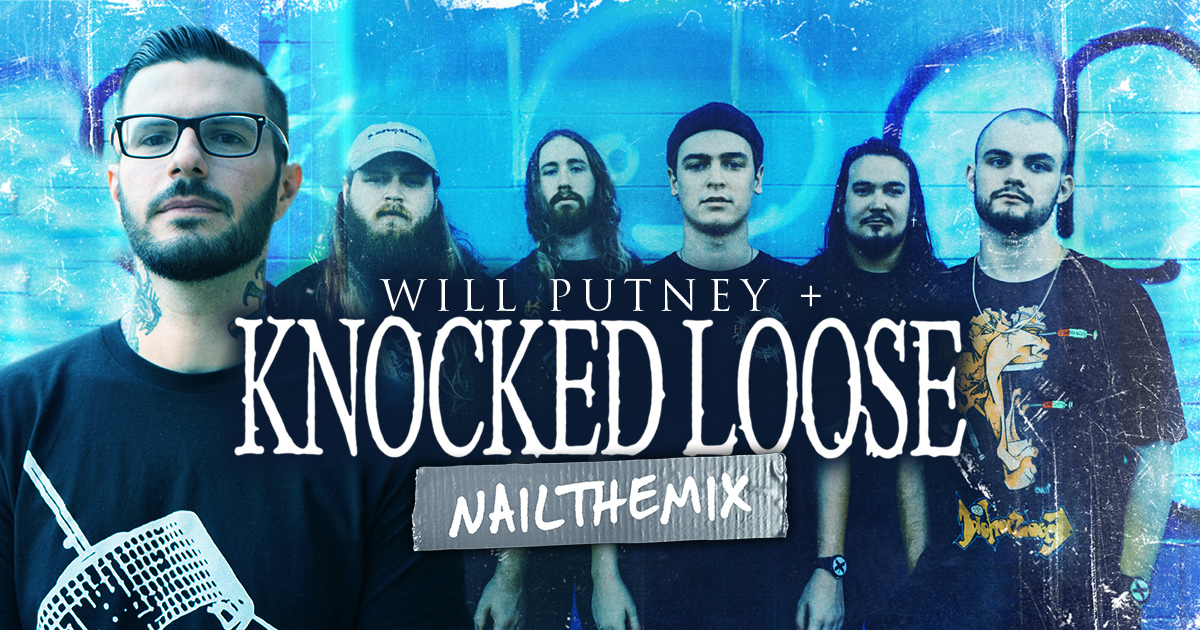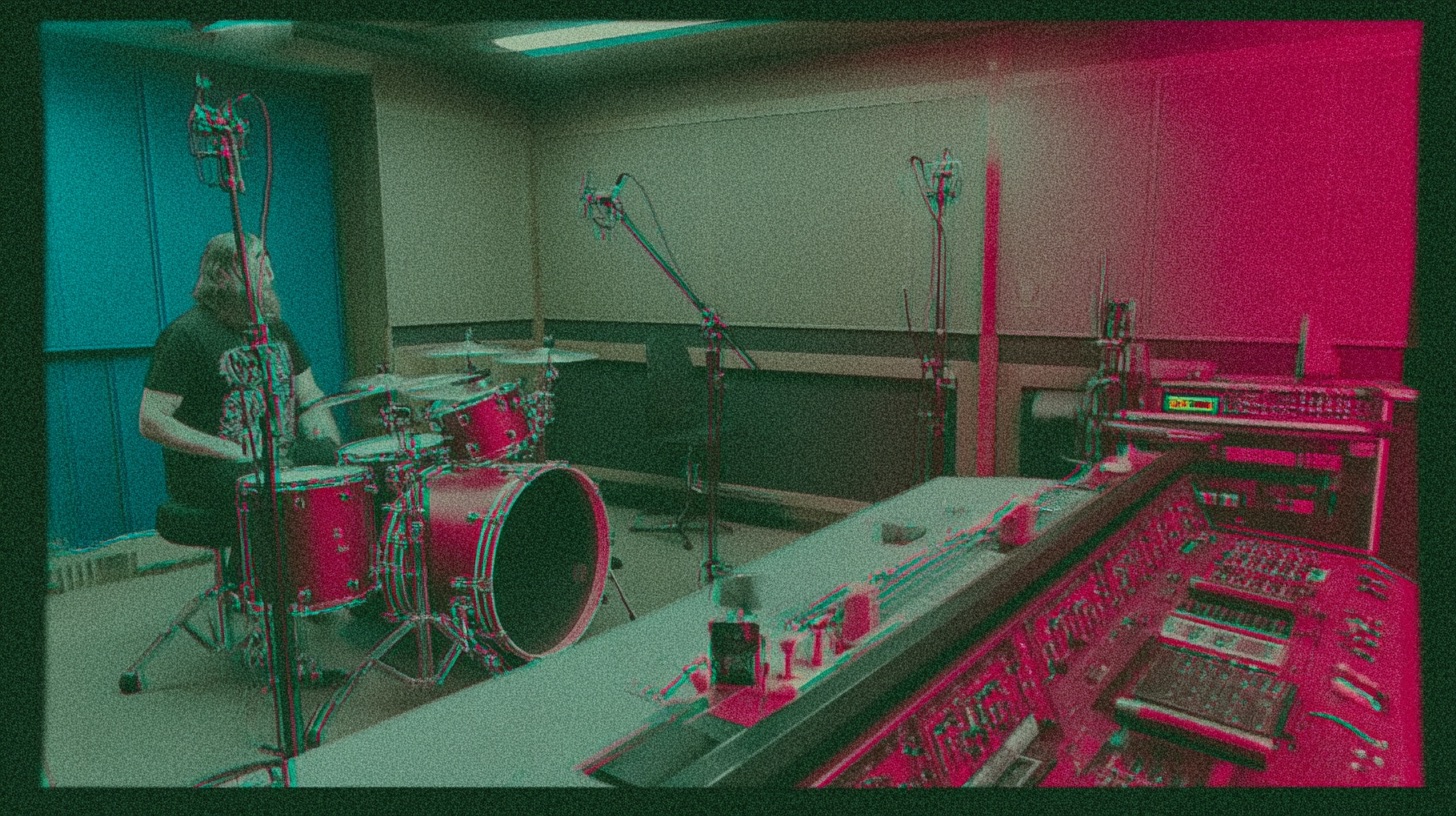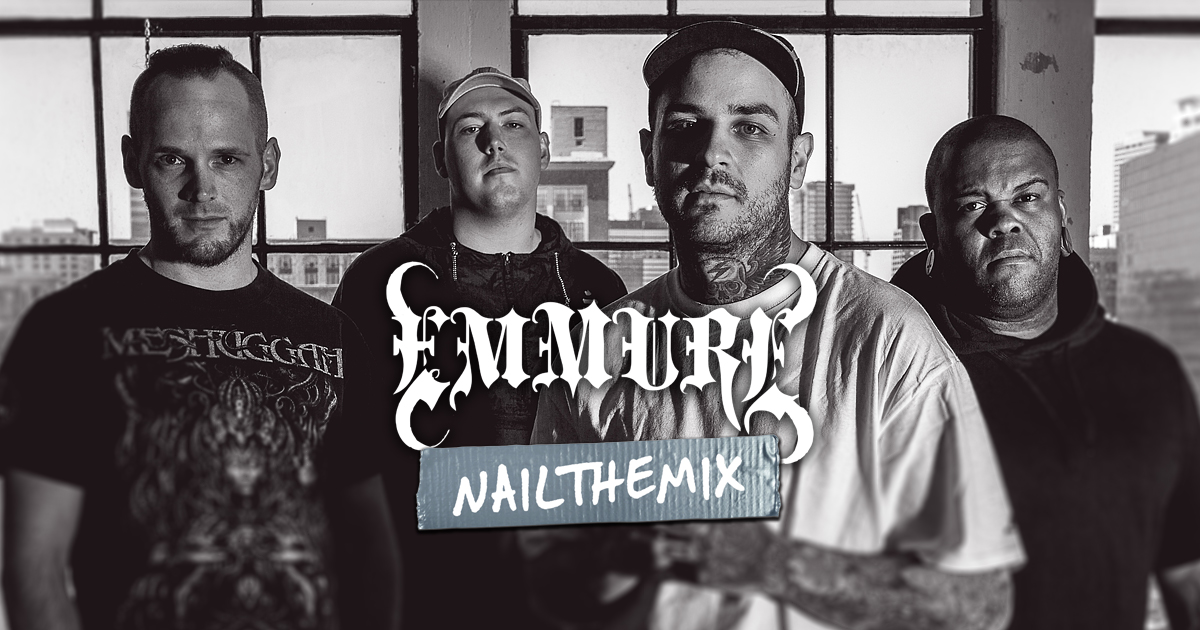
Mixing Bring Me The Horizon Drums with Fredrik Nordström
Nail The Mix Staff
The drum sound on Bring Me The Horizon’s “Chelsea Smile” is nothing short of iconic. It’s punchy, aggressive, and cuts through a wall of guitars with surgical precision. Ever wonder how a sound like that comes together? We got a front-row seat as legendary producer Fredrik Nordström (In Flames, At The Gates, Architects) broke down his kick drum mixing process for this very track, a process that also informed how he tackled Oli Sykes’ iconic vocals.
Forget overly complicated signal chains. Fredrik’s approach is a masterclass in building a massive kick sound through smart layering, surgical EQ, and—most importantly—trusting your ears. Let’s dive into how he crafts that signature metalcore kick.
Building the Foundation: Layering the Kick Drum
Modern metal kick drums are rarely just a single microphone on a single drum. The secret to getting both the low-end weight and the sharp, cutting attack is by blending several sources together. For “Chelsea Smile,” Fredrik builds his kick from the acoustic performance and a couple of carefully chosen samples.
Cleaning the Acoustic Kick
Before you can blend anything, you need a clean, solid source. Fredrik starts with the raw acoustic kick mic—in this case, the classic Shure SM91 inside the drum. His first move is a crucial cleaning step.
He uses a technique many pros swear by: the “search and destroy” method using a parametric EQ.
- Grab a parametric EQ plugin.
- Create a very narrow boost with a tight Q (bandwidth).
- Crank the gain on that band way up.
- Sweep the frequency spectrum until you find a particularly nasty, resonant, or “annoying” frequency that rings out.
- Once you’ve found it, flip the boost into a cut, and pull that ugly frequency down with some targeted kick drum EQ.
This simple move removes the boxy or weird tones from the raw drum, giving you a much better foundation to build upon.
The Power of Samples
With the acoustic kick cleaned up, it’s time to add power and consistency with samples. Fredrik uses two distinct samples to complete his kick sound.
The “T-Rex” Sample
Interestingly, the main sample Fredrik blends in isn’t from a commercial library. It’s a custom kick drum he created himself, affectionately nicknamed “T-Rex.” He notes that it’s an unreleased sample from his personal collection, which gives him a unique sound that no one else has. The sample itself is processed to perfection, meaning it sounds great right out of the box with no additional EQ or compression needed. This is a great reminder of the power of curating or creating your own high-quality sample library.
Adding the “Click” Sample
To get that sharp, beater attack that helps the kick cut through the mix, Fredrik layers in a third sample. He references a “Far Beyond Driven” style sample, alluding to the legendary clicky kick sound from Pantera’s album. This sample isn’t there to provide body or low-end; its main job is to add that specific high-frequency transient that defines a modern metal kick drum.
Finding the Right Blend
So you have three (or more) kick tracks. How do you balance them? Fredrik’s answer is the most important one in mixing: use your ears.
By listening, he determines the hierarchy of the sounds. In this mix, the two main components are the acoustic SM91 mic and his custom “T-Rex” sample. These form the core body and punch of the drum. The U67 (another mic on the acoustic kick) and the Pantera-style click sample are tucked in underneath, providing subtle support and that essential beater attack.
Gluing It All Together: Kick Bus Processing
Once the individual tracks are balanced, the final step is to make them sound like a single, cohesive instrument. To do this, Fredrik routes all four kick tracks to a single stereo bus or group. This allows him to apply processing to the kick drum as a whole as part of his overall drum mixing strategy.
The SSL Channel Strip Magic
On his kick bus, Fredrik turns to a studio classic: the Waves SSL Channel Strip plugin. Here, he makes a few final, powerful tweaks.
- EQ: He applies some broad, musical equalization to shape the overall tone. This includes a boost in the treble and high-mids for attack and presence, a slight cut around 400Hz to remove mud, and another boost around 60Hz to enhance the fundamental low-end thump.
- Compression: He also applies a bit of compression on the bus. The goal here isn’t to squash the kick but to gently “glue” the four separate tracks together. This subtle compression helps control dynamics and really brings the sound to life, making the blend feel seamless.
This combination of surgical moves on individual tracks followed by broader shaping on the bus is a hallmark of professional mixing.
The Pro Mindset: Mix With Your Ears, Not Your Eyes
Perhaps the most valuable lesson from watching Fredrik work is his unwavering philosophy: listen, don’t look.
He emphasizes his use of a physical control surface to manipulate plugins. By having his hands on faders and knobs, he can close his eyes and just listen to the changes he’s making. This prevents a common trap for producers working “in the box”: being fooled by the visual graph of an EQ. You might see a curve that looks extreme and think you’ve gone too far, even if it sounds perfect.
By disconnecting from the screen and focusing only on the sound, you make more musical decisions. You’re learning how to mix music, not just playing a video game.
Want the Full BMTH Mixing Session?
These kick drum techniques are powerful tools you can start using in your own productions right now. But the kick drum is just one piece of the puzzle.
Imagine watching Fredrik Nordström dial in the rest of the kit, carve out space for the huge guitars and bass, and bring the entire mix for “Chelsea Smile” to life, explaining every step along the way. That’s exactly what you get with our Nail The Mix sessions.
Bring Me The Horizon on Nail The Mix
Fredrik Nordstrom mixes "Chelsea Smile"
Get the Session
If you’re ready to see how a legendary producer tackles a classic metalcore track from start to finish, grab the Fredrik Nordström BMTH session now. You’ll get instant access to the full 6-hour mixing session and the original multi-tracks to practice on yourself.
And if you’re looking to build a rock-solid mixing foundation, check out our comprehensive URM Academy courses to truly elevate your productions. Stop guessing and start learning from the best in the business.
Get a new set of multi-tracks every month from a world-class artist, a livestream with the producer who mixed it, 100+ tutorials, our exclusive plugins and more
Get Started for $1






